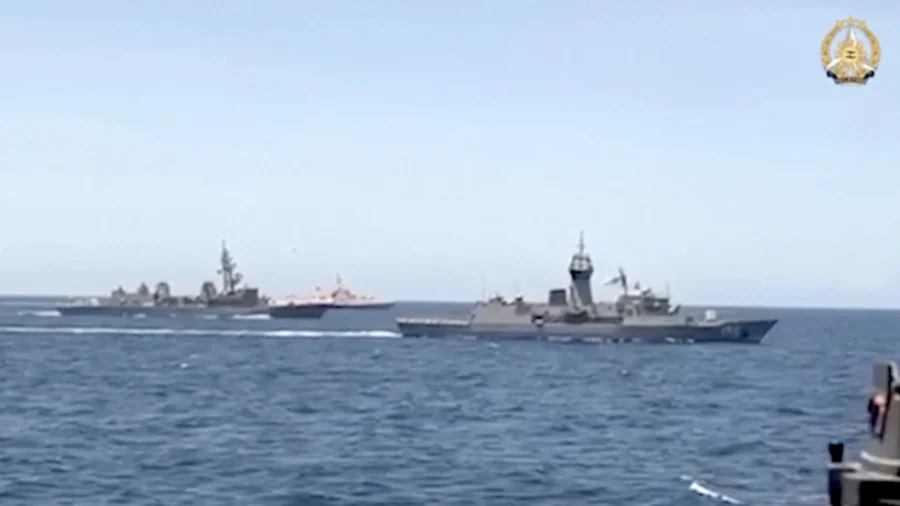The United States, Japan, Australia, and the Philippines held their first joint naval exercises in the South China Sea on Sunday, where Beijing’s aggressive actions to assert its territorial claims have caused alarm.
The show of force included anti-submarine warfare training.
A statement by the Philippines’ armed forces said the drills were held within the Philippines’ Exclusive Economic Zone in the South China Sea and involved aircraft and naval vessels, including littoral combat ship USS Mobile, Australian frigate HMAS Warrumanga, and Japanese destroyer JS Akebono.
The exercises involved communication activities and officers of watch maneuvers aimed at improving interoperability among the four countries’ forces, it said.
China’s military said on Sunday that it had conducted air and sea patrols, and that all activities that “disrupt the South China Sea” are under control, an apparent response to naval exercises by the United States and its allies.
The defense chiefs of the United States, Japan, Australia, and the Philippines had announced on Saturday that they would hold joint exercises in the sea to safeguard the rule of law and uphold the right to sail through and fly over the waters.
China’s ruling communist party has long-simmering territorial disputes with a number of Southeast Asian nations in the South China Sea, a major shipping route.
A brief statement from the Chinese military’s Southern Theater Command said it had organized patrols and that “all military activities that disrupt the South China Sea and create hotspots are under control.”
The statement did not mention the United States or the joint exercises.
Likewise, the United States and its allies did not mention China in their statement, but the four countries reaffirmed their stance that a 2016 international arbitration ruling—which invalidated the Chinese communist regime’s expansive claims in the South China Sea—was final and legally binding.
The growing tensions in the disputed waters are expected to be high on the agenda when U.S. President Joe Biden hosts his Japanese and Philippine counterparts in a summit at the White House this week.
Last year, the Chinese foreign ministry warned against military exercises involving the United States and its allies in the disputed waters harming its security and territorial interests.
U.S. Defense Secretary Lloyd Austin said in a separate statement that the exercises “underscore our shared commitment to ensuring that all countries are free to fly, sail, and operate wherever international law allows.”
Australian Defense Minister Richard Marles said “respect for national sovereignty and agreed rules and norms based on international law underpin the stability of our region.”
Defense Secretary Gilberto Teodoro Jr. said the military drills on Sunday would be the first in a series of activities to build the Philippines’ “capacity for individual and collective self-defense.”
Aside from China and the Philippines, the long-simmering disputes in the South China Sea, a key global trade route, also involve Vietnam, Malaysia, Brunei, Japan, and Taiwan. But skirmishes between Beijing and Manila have particularly flared since last year with China’s increasing presence in the region.
Washington lays no claims to the strategic seaway but has repeatedly warned that it’s obligated to defend its longtime treaty ally the Philippines if Filipino forces, ships, and aircraft come under an armed attack, including in the South China Sea.
China has warned the United States not to intervene in the disputes.
In the latest hostilities last month, the Chinese coast guard used water cannons that injured a Filipino admiral and four of his navy personnel and heavily damaged their wooden supply boat near the Second Thomas Shoal. The cannon blast was so strong it threw a crewman off the floor but he hit a wall instead of plunging into the sea, Philippine military officials said.
The Philippine government summoned a Chinese embassy diplomat in Manila to convey its “strongest protest” against China.
Reuters and The Associated Press contributed to this report.

